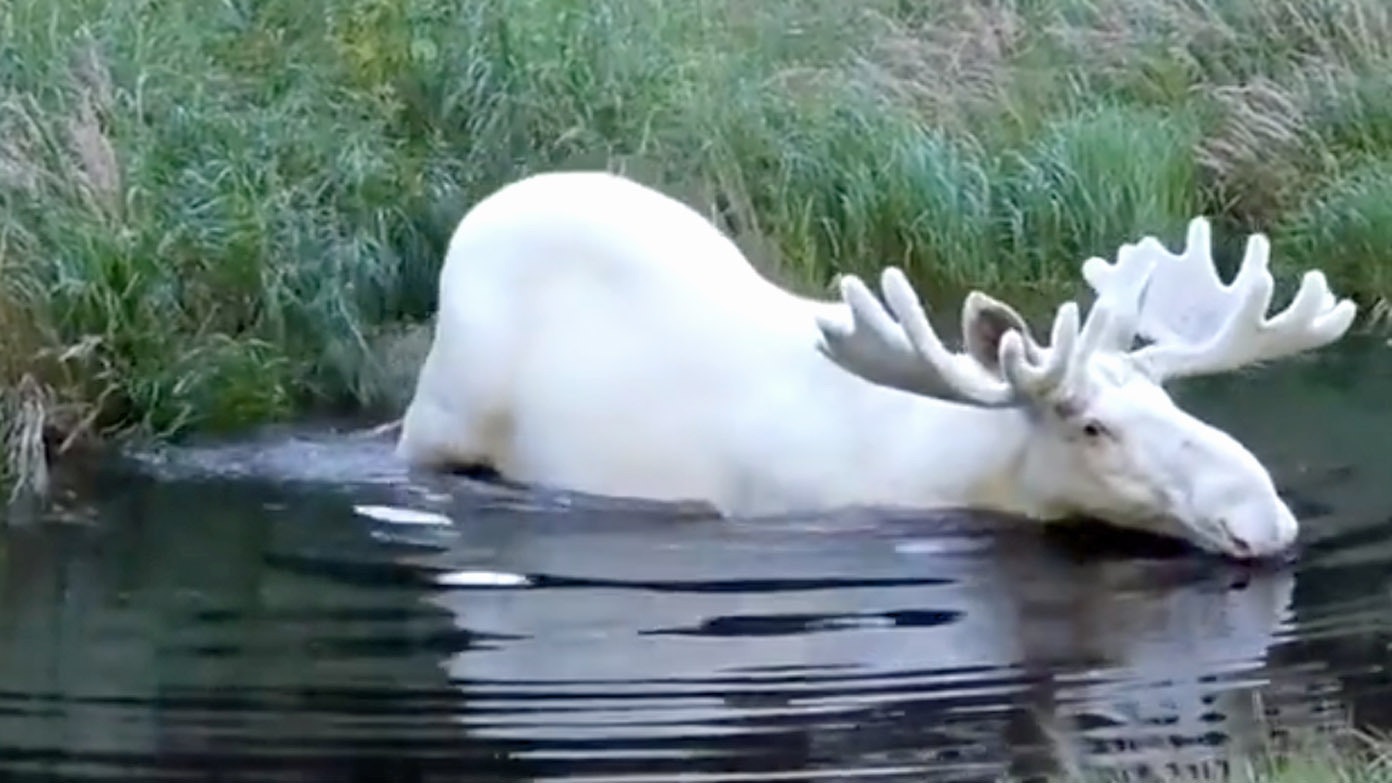By Mark Heinz, public lands and wildlife reporter
Mark@CowboyStateDaily.com
It could be an ethical quandary for hunters: If you had an albino critter in your sights, would you pull the trigger?
So long as the hunter has a valid tag and the species is in season, there’s no regulation against killing albino game animals in Wyoming, Sara DiRienzo, the public information officer for the Wyoming Game and Fish Department, said in an email on Tuesday to Cowboy State Daily.
Still, some hunters might hesitate, because such all-white creatures are so rare and unusually beautiful. A video of an albino moose sent out across Twitter went viral and immediately gained fans all over the world.
The website “All About Moose” says albinism occurs in about one of every 100,000 animals in that species.
The condition is caused by a recessive gene and is extremely rare, DiRienzo said, although “in Wyoming, we’ve seen wildlife from deer to catfish with albinism. “
There wasn’t information available about the last time an albino moose was spotted in Wyoming.
An albino channel catfish was found in May 2017 among a tank of 2,500 catfish that had been transported from Arkansas for stocking in Sloan’s Lake in Cheyenne, according to a Game and Fish news release at the time.
The same year, an albino pronghorn (antelope) caught attention after being spotted among a herd near Cheyenne. A photo of it was posted on a Rocky Mountain Elk Foundation members’ chat forum. Other members of the forum shared photos of albino wildlife from around the country.
Albinism in wildlife occurs when an animal’s cells can’t produce melanin, a pigment that causes colorization in skin, eyes, scales or fur, according to information posted on the Iowa Department of Natural Resources website. Because of the lack of eye pigmentation, albino animals can suffer from impaired eyesight. The bright colorization can also make them more vulnerable to predators.
However, albinism isn’t an all-or-nothing condition. Some animals can be only partly bright-white, while the rest of their skin, scales or fur will have normal colorization.





